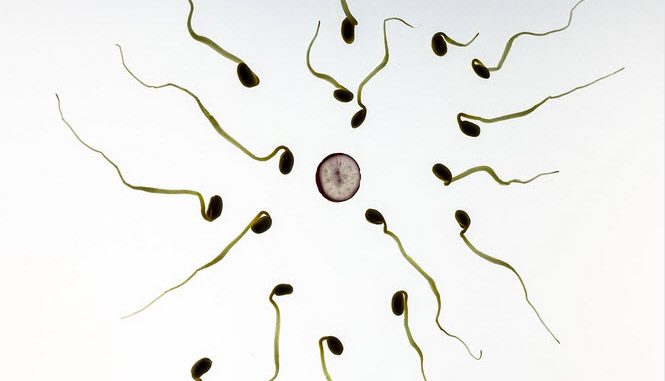
Swedish researchers have discovered a mysterious spiral-shaped nanostructure in the tails of human sperm. It’s usage remains unknown, but it might be capable of giving the sperm a speed-boost in the race towards the egg.
The finding is somewhat of a surprise, since human sperm have been meticulously studied by scientists for such a long time.
TAILS
The newly found nanostructure has been named tail axoneme intra-lumenal spiral (TAILS).
It is still unclear what it’s made of, what it does and how important it is for the sperm. The researchers are therefore planning to continue to study it.
It’s found inside the sperm’s microtubules
As you probably know already, each human sperm tail contain tubulins that form long tubes called microtubules. These microtubules are attached to thousands of motor proteins that pull and bend the microtubules, and this is what makes it possible for sperm to swim forward.
“It’s actually quite incredible that it can work,” says Johanna Höög, senior researcher for the study at the Department of Chemistry and Molecular Biology at the University of Gothenburg. “The movement of thousands of motorproteins has to be coordinated in the minutest of detail in order for the sperm to be able to swim.”
Since the newly discovered nanostructure is found inside the microtubules, the researchers have suggested that it might be able to increase the sperm’s speed.
“We believe that this spiral may act as a cork inside the microtubules, preventing them from growing and shrinking as they would normally do, and instead allowing the sperm’s energy to be fully focused on swimming quickly towards the egg,” says Davide Zabeo, the lead PhD student behind the discovery.
Nobel Prize-winning technique
Finding the nanostructure was possible thanks to cryo-electron tomography (cryo-ET), a microscope technique that allows researchers to freeze tiny structures and take a series of 2D pictures that can be combined to form a detailed 3D image. This is the technique for which Joachim Frank, Jacques Dubochet and Richard Henderson were awarded a Nobel Prize in 2017.
“When we looked at the first 3D images of the very end section of a sperm tail, we spotted something we had never seen before inside the microtubules: [a] spiral that stretched in from the tip of the sperm and was about a tenth of the length of the tail,” says Höög.
Read more
The study, which is a collaboration between researchers at the University of Gothenburg in Sweden and the University of Colorado in the USA, was published online 2018-02-09 in the journal Scientific Reports.
A lumenal interrupted helix in human sperm tail microtubules
Scientific Reports 8, Article number: 2727(2018)
- John M. Heumann,
- Cindi L. Schwartz,
- Azusa Suzuki-Shinjo,
- Garry Morgan,
- Per O. Widlund
- Johanna L. Höögs
